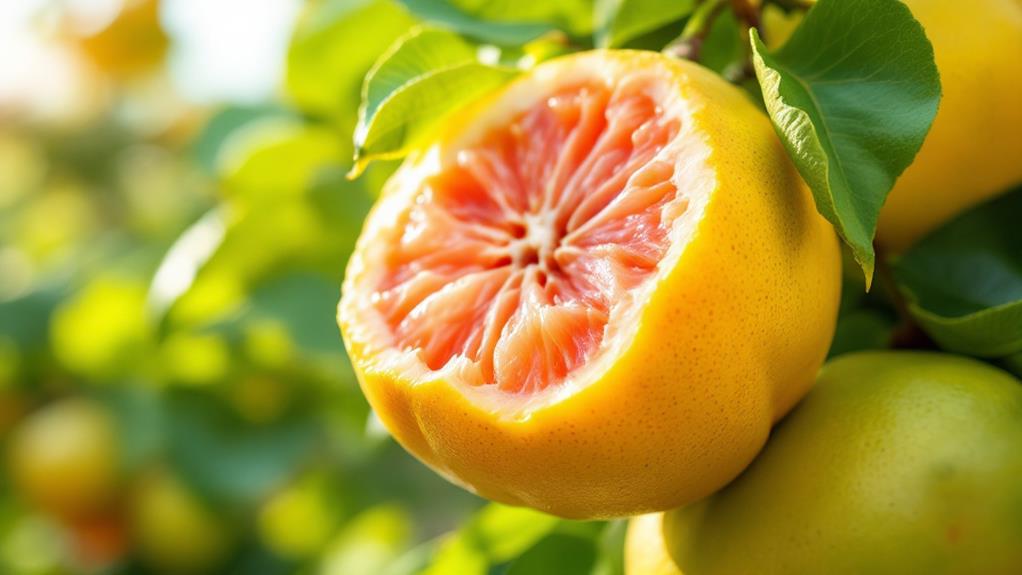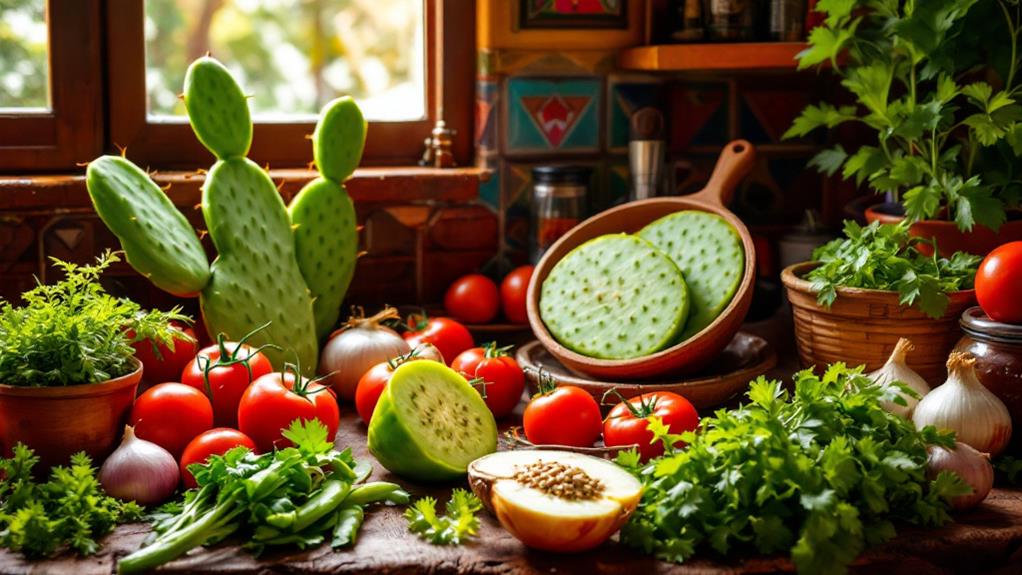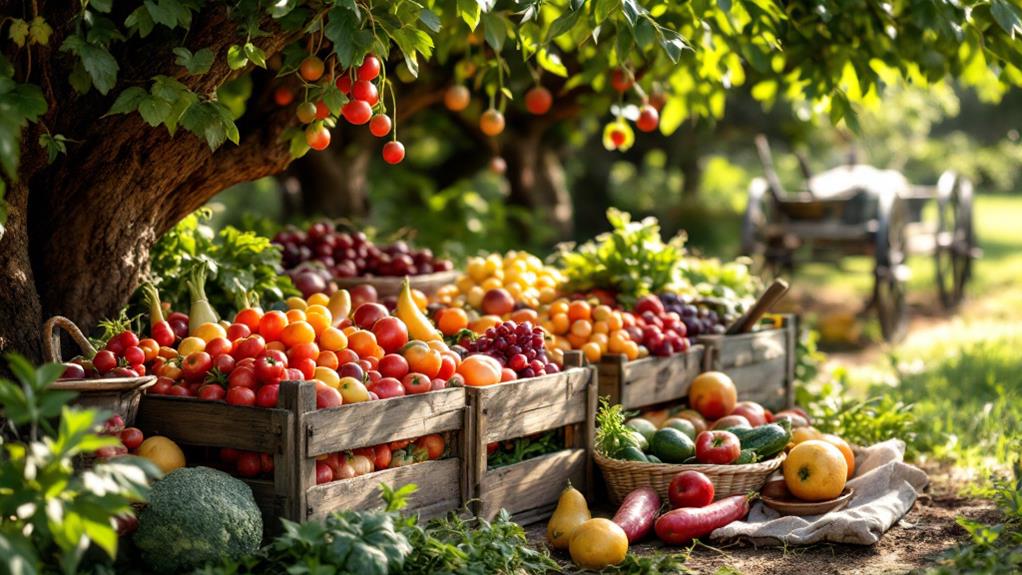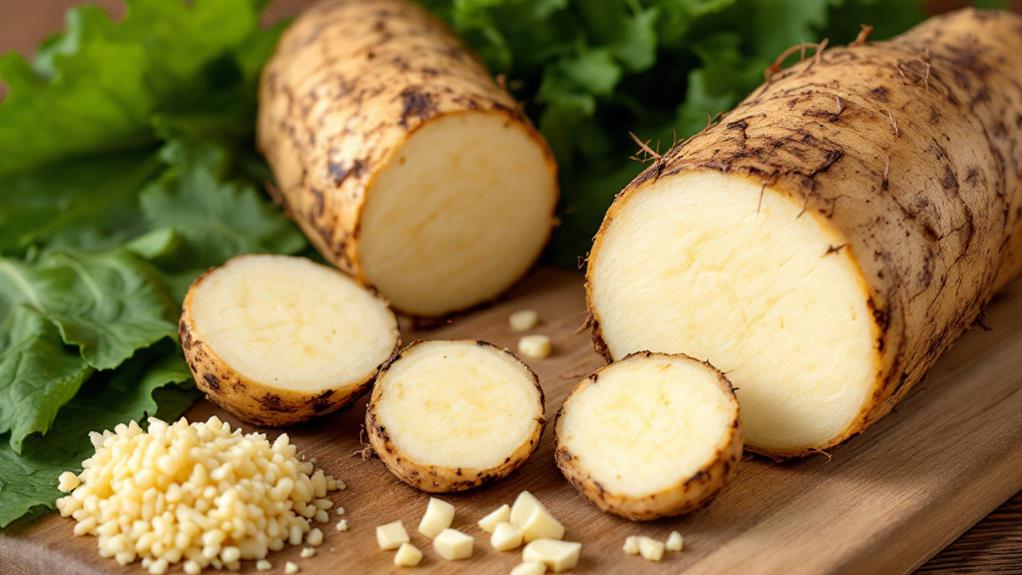Fascinating Facts About North American Fruits You Didn’t Know
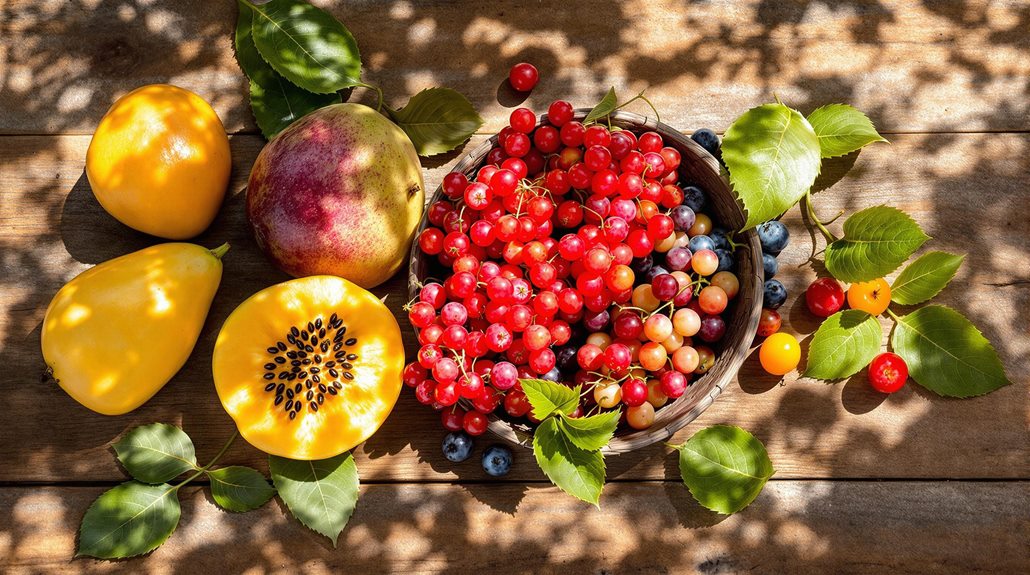
You're about to encounter astonishing facts about North American fruits. Did you know cranberries can bounce due to air pockets? This quality check guarantees you get the freshest. Or, take strawberries; they're not true berries and have seeds on the outside—up to 200 per fruit! Oranges' color doesn't reflect their taste, so green oranges can be just as delicious. Most fruits you enjoy, like apples and seedless grapes, are clones for consistency. Even helicopter drying is used to save cherries from excess rain. If you keep exploring, you'll find even more remarkable insights about your favorite fruits.
Colorful Oranges Reality
Many people assume that all oranges are, well, orange, but that's not always the case. In fact, oranges from sub-tropical regions like Brazil can be yellow or green. The reason? These areas don't get cold enough during ripening to trigger the typical orange color. This doesn't mean they're any less nutritious or ripe. In fact, these colorful variations can still be a great enhancement to your healthy diet.
If you've ever wondered why imported oranges in your local market always seem perfectly orange, it's not just nature. Ethylene gas plays a big role here. Exporters often use this gas to treat oranges, changing their color to meet your expectations. It's a fascinating trick that highlights how much consumer preferences influence the appearance of your fruit.
Interestingly, Florida oranges are usually yellower than those from California. This is due to the different geographic conditions they grow in. Despite their color, these oranges are just as flavorful and ripe. Remember, color isn't always the best indicator of an orange's maturity or taste. So, the next time you pick out oranges, consider their origin and give those less-orange ones a chance. They might surprise you!
Cloning in Fruit Production
In the current fruit market, nearly all commercial fruits, like apples and oranges, are clones. This uniformity guarantees that when you pick up an apple or orange, you know exactly what you're getting regarding taste, size, and appearance. Cloning is accomplished through a technique called grafting. By attaching a cutting from a tree with desirable traits to rootstock, new trees are produced that faithfully replicate those characteristics. This method is especially vital for seedless fruits, like certain grapes and watermelons, as they can't reproduce naturally.
However, while cloning allows for consistent production of popular cultivars, it comes with a downside. The process sacrifices genetic diversity, which can make crops more vulnerable to diseases. When all the trees in an orchard are genetically identical, a disease that affects one tree can potentially devastate the entire crop. Despite this risk, cloning remains a preferred method in commercial fruit production. It guarantees that every time you buy your favorite fruit, you're assured the same quality and flavor experience. As a consumer, you benefit from the predictability and consistency that cloning brings to the fruit market.
The High-End Fruit Market
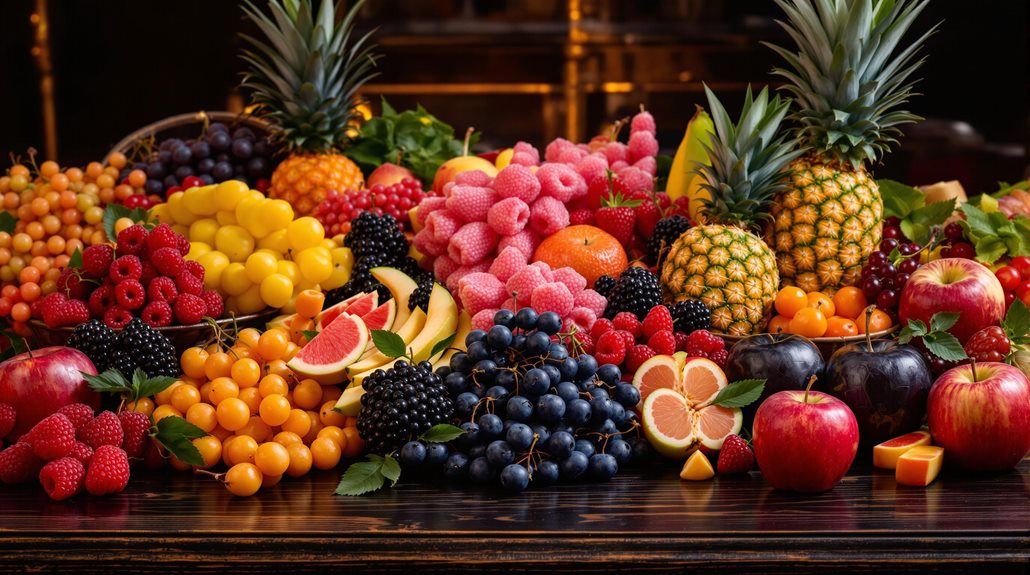
Across the globe, the luxury fruit market captures attention with its blend of opulence and tradition. In Japan, a pair of Yubari cantaloupes once sold for over $23,500, showcasing the cultural importance and high demand for extravagant fruits. These premium fruits aren't just about taste; they're symbols of status and care. Gift-giving traditions emphasize presentation and quality, with fruits carefully cultivated and packaged.
You might find it fascinating how the market offers unique products like tattooed apples, appealing to those seeking novelty and exclusivity. Farmers in regions known for luxury fruit production invest heavily in creating ideal growing conditions. Techniques like protective coverings guarantee the fruit's appearance and quality remain exceptional.
Despite a decline in the general market, prices for premium fruits stay high. This persistence reflects the allure they hold among affluent consumers, who appreciate the uniqueness and thorough care involved. Here's a glimpse of what makes these fruits so extraordinary:
| Feature | Description | Example |
|---|---|---|
| Cultural Significance | Reflects status and tradition | Yubari Cantaloupes |
| Unique Offerings | Novelty and exclusivity in fruit choices | Tattooed Apples |
| Careful Attention | Ideal growing conditions and appearance maintenance | Protective Coverings |
| Presentation | Emphasis on quality packaging and presentation | Gift-Giving Traditions |
| Market Resilience | High prices despite market decline, showcasing continued demand among affluent buyers | Premium Fruits |
These elements combine to make the luxury fruit market a fascinating world of opulence and tradition.
Helicopter Drying Techniques
Imagine helicopters buzzing over cherry orchards, playing a vital role in preserving the quality of the crop. When rain threatens to ruin the delicate cherries, farmers in the U.S. turn to helicopter pilots to save their harvest. These skilled pilots fly over the orchards, using the helicopter's blades to create wind. This wind helps evaporate moisture from the cherry trees, preventing the cherries from splitting and losing their value.
The technique is in high demand, especially during the cherry season, because wet conditions can lead to significant losses. It's an important practice for farmers aiming to maintain the quality and marketability of their crop. With such high stakes, helicopter pilots can earn hundreds of dollars per day, making it a lucrative but risky job. The demand guarantees that these pilots are always busy when rain is in the forecast.
However, it's not without its dangers. The job carries risks, as there have been instances of crashes while maneuvering through the tight spaces of orchards. Despite the risks, the careful work of helicopter pilots is invaluable, saving crops that might otherwise be lost to excessive moisture.
Year-Old Apples Explained
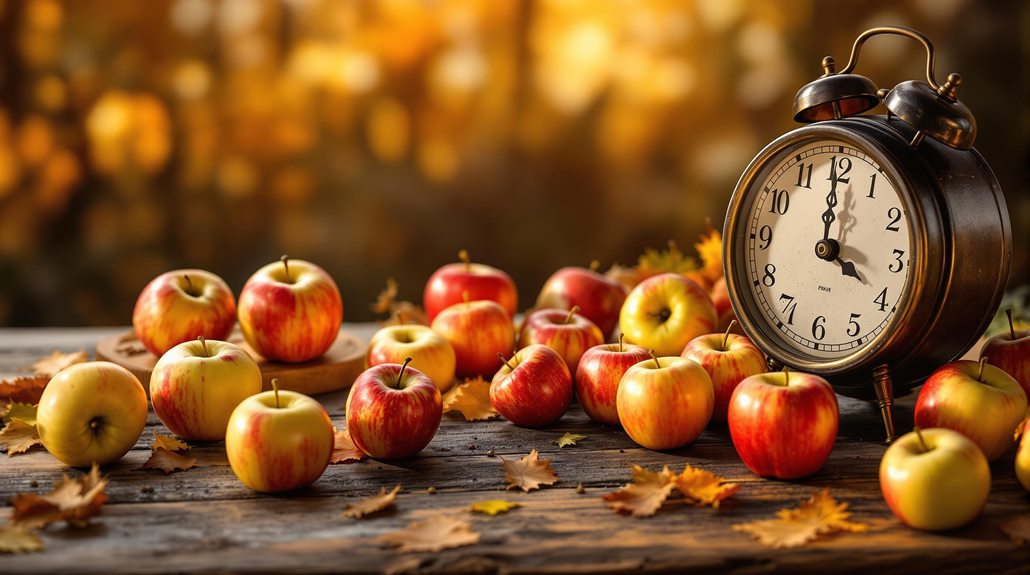
Ever wonder how apples stay fresh for months, even when they're out of season? Advanced cold storage technology makes this possible by preserving apples for up to a year after they're harvested. This means you can enjoy them throughout the year, regardless of the season. The secret lies in controlled atmosphere storage, which carefully regulates oxygen, carbon dioxide, and humidity levels. This specialized environment helps maintain the apples' quality and flavor, ensuring they remain as appealing as possible for extended periods.
Although most apples you find in stores year-round are harvested in the fall, not all apple varieties are suitable for long-term storage. Only certain types are chosen for their ability to withstand the process without significant loss of quality. While these stored apples may lose some crispness and develop a slightly mealy texture over time, they still offer considerable health benefits. The nutritional value remains relatively high, so you're not missing out on crucial vitamins and nutrients.
It's fascinating how modern storage techniques allow us to enjoy apples whenever we wish. Though they might not taste as fresh or flavorful as their in-season counterparts, they're still a convenient and nutritious choice.
Banana Ripening Secrets
While you might marvel at how apples are stored to maintain freshness, bananas present a different kind of preservation challenge. The banana plant produces fruit that continues to ripen even after it's picked. This unique trait means bananas are shipped green to prevent spoilage. Once they arrive, ethylene gas is applied during storage, controlling the ripening process so they reach the ideal shade before hitting the shelves.
Bananas are categorized into seven ripeness shades, with shades 2.5 to 3.5 being the sweet spot for prime flavor and sweetness. You might not know that the Cavendish banana, the one you likely eat most often, is under threat. Its genetic uniformity makes it vulnerable to diseases like the Tropical Race Four fungus, posing risks to global banana production.
Besides, storage conditions are vital. Temperature and humidity must be precisely controlled to guarantee you get bananas with the best quality. They're not just tasty but also packed with vitamin C, which offers numerous health benefits.
Surprising Strawberry Facts
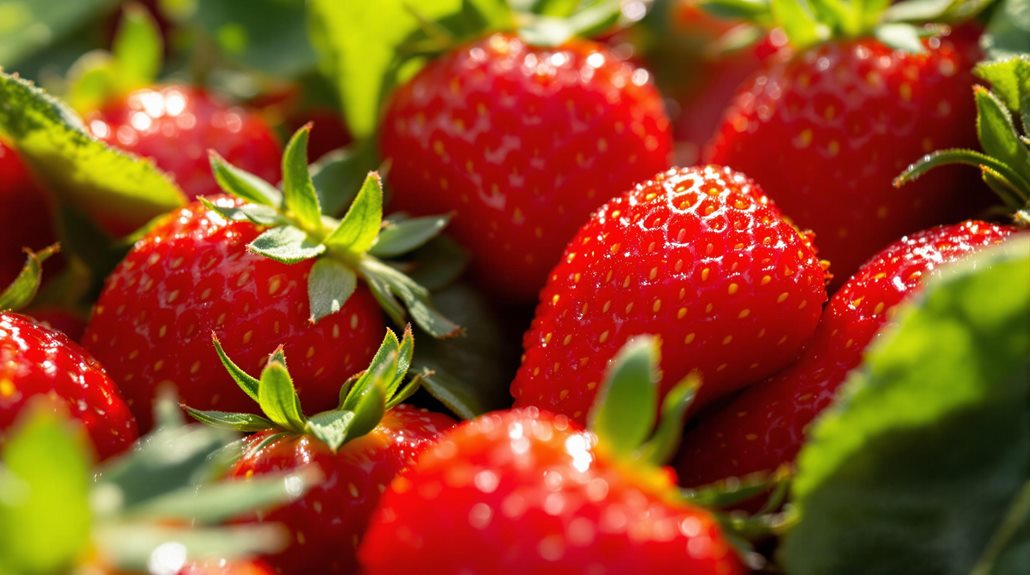
Although strawberries might seem like simple fruits, their characteristics are anything but ordinary. Did you know strawberries aren't true berries? Botanically, they're classified as aggregate fruits because they develop from a flower with multiple ovaries. This unique formation leads to an unusual feature: the seeds on the outside. A single strawberry can showcase up to 200 seeds dotted across its surface, making it stand out among fruits for its high seed count relative to size.
Strawberries are truly the heralds of spring, being the initial fruits to ripen as the season warms. They thrive in well-drained soil and full sunlight, which explains why they're a favorite among gardeners and fruit enthusiasts alike. With over 600 different types of strawberries, you can enjoy a spectrum of flavors and harvest times. June-bearing varieties produce a single large crop, while everbearing and day-neutral types offer strawberries throughout the growing season.
Besides their delightful taste, strawberries are packed with antioxidants and vitamin C, supporting heart health and enhancing your immune system. So, the next time you savor a strawberry, remember there's more to this fruit than meets the eye!
Grapefruit and Medications
Strawberries might be a gardener's delight, but in relation to grapefruit, you need to be cautious, especially if you're on medication. Grapefruit, while invigorating and nutritious, can have serious interactions with over 40 prescription medications. It's important to be aware of these potential risks. The natural compounds found in grapefruit inhibit specific liver enzymes, such as CYP3A4. These enzymes are essential for metabolizing many drugs. When grapefruit inhibits these enzymes, it can result in increased drug absorption, leading to higher concentrations in your bloodstream.
This effect can cause toxicity or other adverse effects, making grapefruit interactions particularly concerning. Some common medications affected by grapefruit include statins, used for lowering cholesterol, certain blood pressure medications, and anti-anxiety drugs. If you're taking any of these, it's crucial to consult your healthcare provider about whether you should avoid grapefruit and grapefruit juice. They often advise against consuming grapefruit to prevent harmful interactions.
Being informed about grapefruit's potential effects on medications helps you make safer choices. Remember, while grapefruit might seem harmless, it can pack a powerful punch in relation to interacting with certain medications. Always prioritize your health and seek professional advice.
Bouncing Cranberries Insight
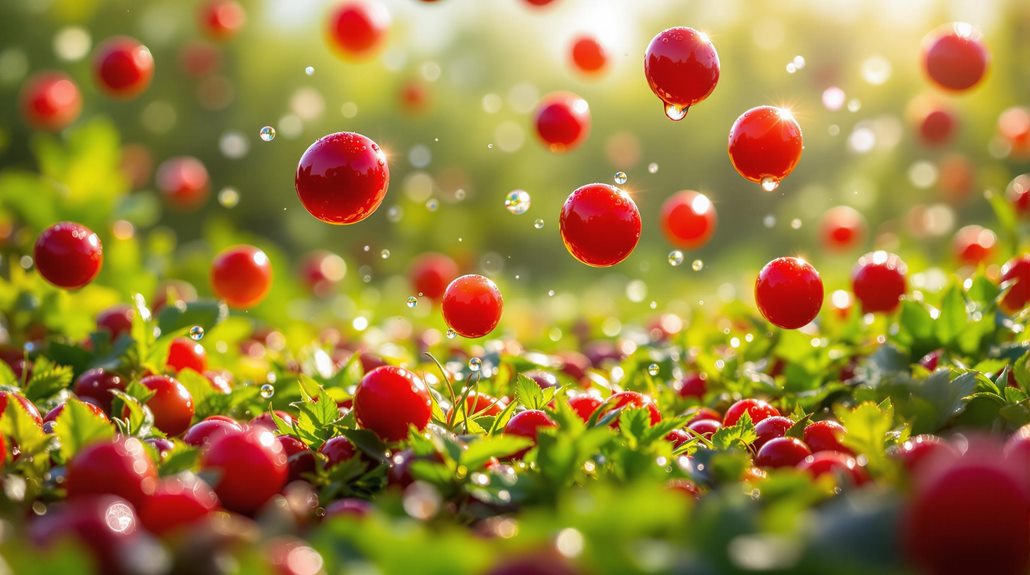
Revealing the unique quality of bouncing cranberries offers a fascinating insight into their selection process. Did you know that cranberries are one of the few fruits that can bounce? This curious trait is thanks to the air pockets within the berries, which was initially uncovered by John Peg Leg Webb in 1880. When you drop a cranberry from a height, its ability to bounce is a clear indicator of its quality. If it bounces high, it means the cranberry is firm and fresh, making it a top pick during harvesting.
The bouncing quality of cranberries isn't just an amusing fact; it's a practical tool in the cranberry industry. When cranberries are harvested, they're often flooded in bogs. As they float to the surface, farmers can easily collect them. However, only the best cranberries are chosen based on their bounce. This method guarantees that only the highest-quality berries reach your table.
Moreover, this bouncing characteristic is also used as a marketing point, emphasizing the freshness and unique nature of these North American fruits. So, next time you enjoy cranberries, remember their bouncing expedition from the bog to your plate!

